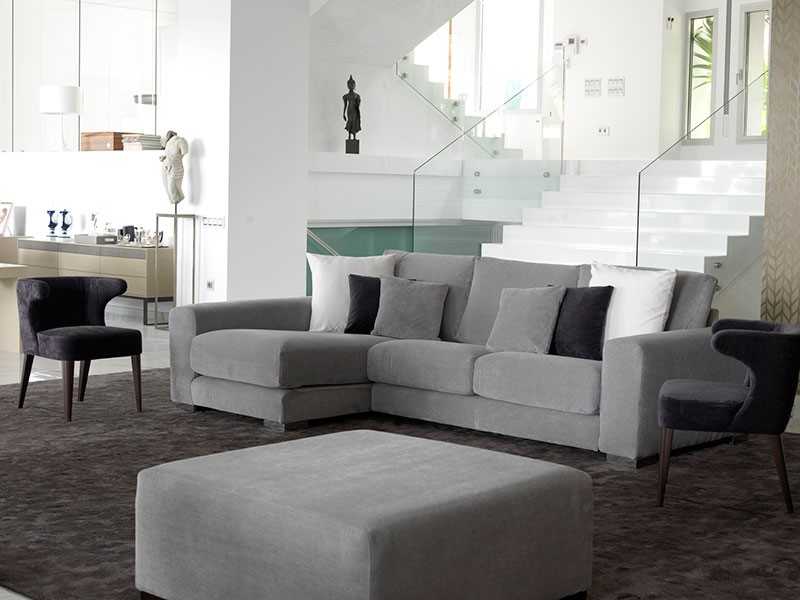We live in a world with hundreds of chemical substances which we know very little about, either due to our ignorance of the subject, or simply the impossibility of testing out these materials due to the increasingly rapid development of the chemical industry and manufacturers' needs to sell their products. This makes it virtually impossible, in many cases, to prevent possible adverse reactions.

It is increasingly common for people to develop strange allergies to seemingly harmless products that no one would think are a threat to our health. It would seem that the indiscriminate use of chemicals by large companies is resulting in hundreds of cases of people who cannot even touch plastic, who get skin rashes by wearing certain clothes, or – what we want to mention today – who have to run out of their own homes because of the stuffing used in their armchairs and sofas!

STUDIES IN THE UNITED STATES
Since the 70s various studies have been conducted linking the chemicals used in seating foam to hormonal disorders, neurological and reproductive damage and even cancer. One of these toxic products is so-called PBDE (polybrominated diphenyl ether), a flame retardant used to protect sofas, mattresses, chairs and other furniture. The problem is that this substance is readily degradable, so its molecules become airborne, where they can be easily inhaled or ingested in food.

Last year, Duke University and the Green Science Policy Institute published a study in which the compounds used in the foam of 101 sofas purchased in the United States between 1984 and 2010 were analysed, and the study found that 85% of them contained TDCPP, a chemical fire retardant that is inadvisable for use. This percentage was much higher than expected, because even though TDCPP is not prohibited in the United States, it was included in California's list of carcinogenic chemicals in 2011.
PROBLEMS WITH SOFAS SOLD IN EUROPE
While on the old continent legislation in these areas is not so permissive, Spain also presents cases of "toxic" sofas. The first case was a Madrid family, who after buying a sofa in a large department store, had to go to hospital due to a strange case of hand allergy, which turned out to be because their new sofa had been treated with DMF (Dimethylfumarate), a substance used to combat damp and fungi which had been banned in the European Union because it was known to cause various allergic reactions such as itching, rashes, burns or respiratory problems.

Similar cases were also found in France, as the store chain continued to sell these products on the European level. Even today, sofas are still sold that do not comply with all current laws as regards toxic chemical treatments in sofa and armchair foam.
Moreover, the problem of these chemicals is that once they come in contact with air, even if you throw out the sofa, some substances still remain, and this is what makes it really dangerous for our health.
MEXICO, ARGENTINA, UNITED KINGDOM...
Cases like these, unfortunately, are not exceptional. They are a global problem that requires us consumers to be very aware of what we are doing when we buy a sofa for our homes.
Countries like Argentina and Mexico have received complaints precisely because of the passive role of their governments as regards the use of toxic chemicals, not only in the upholstery and foam of sofas, armchairs, chaise longues and chairs, but also in treatments and varnishes used in the wood of household furniture.

London was recently the scene of a 20-million-pound indemnity compensation for a person affected by DMF. And this was not an isolated case; more and more people having been affected are coming to light. One of the main problems is that most furniture of this type, including sofas, armchairs, chairs and poufs, come from countries with a much lower level of control over toxic chemicals, or even where no appropriate legislation is in place.

IN SUMMARY
It is important to be properly informed and 100% sure about what a nice, cheap sofa is really made of, as this is a matter of vital importance to our health and our children's health – and that of the whole family. Buying a sofa with an appropriate certificate that guarantees the entire manufacturing process and that the products used in production are free from harmful substance is the starting point – but not the only one available to you. You can always ask your salesperson any questions you may have about the product on offer, and if necessary, contact the manufacturer as well. Because buying a sofa is actually much more important than it seems.
In the manufacture and preparation of our fabrics, Aquaclean can and does always confirm that no harmful products as mentioned in this article have been used. And for an even greater assurance as to product safety, our fabrics meet all the standards of the OEKOTEX 100 Harmful Substances Control.


